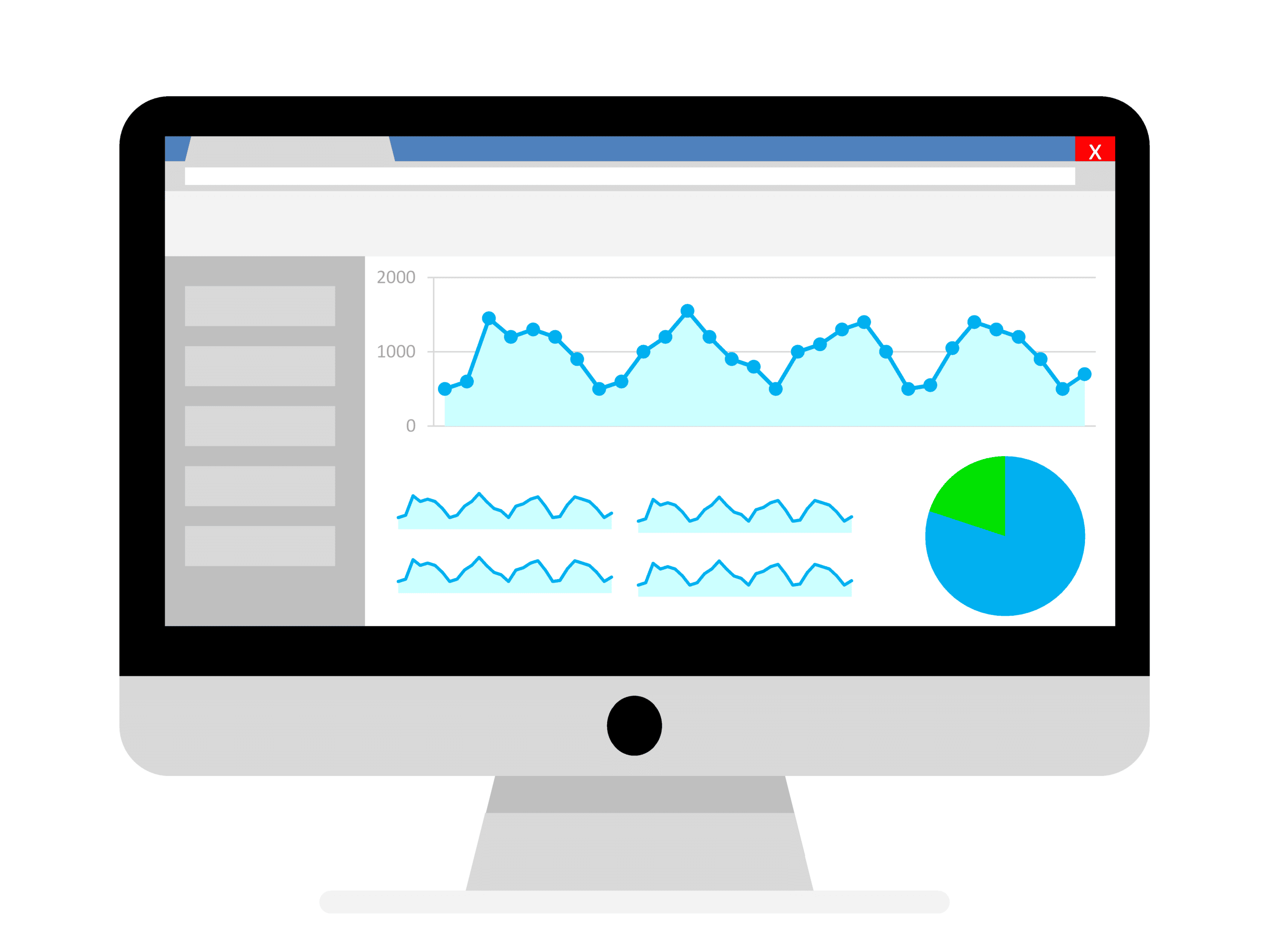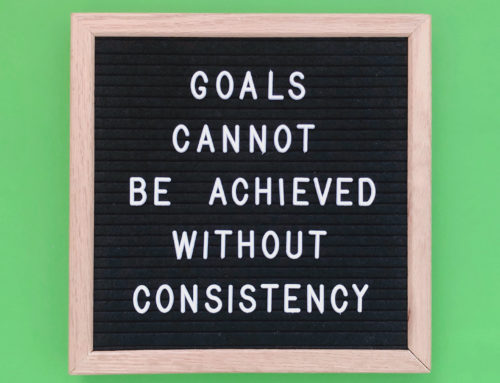Analytics
In this episode of the Agent Sauce Real Estate Marketing Podcast we discuss Analytics. The means, the metrics and the value of using analytics in your real estate marketing. Some of the topics we cover are:
- Analytics Tools
- Analytics Metrics to watch
- What the Metrics mean
And so much more. Hope you enjoy it and let us know what you think in the comments section below.
Like this episode? Check out the others Real Estate Marketing Podcasts
Podcast Transcription:
Adam Small: Hi, Adam Small here with AgentSauce and this is the real estate marketing podcast and we’re in the studios of DK New Media and I’ve got Doug Karr with me.
Douglas Karr: : Hey, how’s it going?
Adam Small: All right, and how are you?
Douglas Karr: : Fantastic.
Adam Small: That’s good to hear. Today we’re going to actually kind of talk about analytics.
Douglas Karr: : Oh, excitement.
Adam Small: Well it’s one of your favorite topics.
Douglas Karr: : It is.
Adam Small: But honestly it’s a thing that’s really not, I feel like is not utilized enough in any sort of marketing.
Douglas Karr: : Yes, I agree. I was just joking. When people think about data and analytics they typically are like, but-
Adam Small: Exactly you know.
Douglas Karr: : It actually is pretty exciting what you can discover with it.
Adam Small: I think that the problem, the thing that lends people to that snoring, sleepy feeling is over-analyzing it.
Douglas Karr: : Yes that’s true, or getting lost in it.
Adam Small: Right, not knowing what to do, what it means, or anything like that.
Douglas Karr: : Yes, if someone opens up Google Analytics it’s pretty daunting. What am I looking at? What could I change?
Adam Small: Well exactly, so I’ve got 1,000 people came to my website today but 53% of them bounced what does that mean? Did I get any conversions or anything like that? First of all let’s kind of frame this, we’re not really talking about specific analytic packages or even analytics for specific things like websites. We’re just talking about having some sort of metric and measurement of your overall marketing practices.
Douglas Karr: : I like that.
Adam Small: I think since you mentioned Google Analytics that’s one of the first ones that comes to mind. It’s a nice free package and really does provide a great amount of insight. What are some of the most important things that you see in Google Analytics?
Douglas Karr: : That’s such a good question. You know when we’re working with clients let’s start with the biggest mistake that we see is someone just grabs one number or one chart and says what’s going wrong? Maybe their traffic is half of what it was yesterday, no matter what happens, maybe it’s like you said my bounce rate went from … Bounce rate is when someone lands on your site and then leaves. Maybe it went from 20% to 80% and they freak out. The problem with that is that instantaneous is tough to measure, it’s like getting on a scale every hour to measure whether you lost weight. You’re just not going to see the difference.
Adam Small: There’s no real value in that.
Douglas Karr: : Yes there really isn’t, and so it’s more looking over time and seeing how you’re trending and looking at maybe this year compared to last year, this month compared to last month, and seeing whether you’re improving over time. You could look at every aspect of every element. How many people came to your site, how many bounces, how many search visitors, how many mobile? Everything, what you want to do is see are these all trending in good directions?
Adam Small: Really you’re just looking at things over the long term, just like the success of a business, analytics could very well be your financial reporting except it’s for whatever you’re looking at, whether it be a website, email marketing, other lead generation techniques that you’re utilizing. The goal there is to see what the long-term trend is.
Douglas Karr: : Right, you’re in the real estate marketing industry so I’ll make a really bad analogy because I’m not in the real estate marketing industry.
Adam Small: Okay, well you feel free to do that.
Douglas Karr: : If you’re someone that sells houses and you’re selling three or four a month so you’re pretty happy with what you’re making and one month you sell eight houses, well of course your numbers jumped, or one time you sold one house and your numbers dropped out the tank. That doesn’t mean the world is over, you might have four more in the pipeline and you’re about close on or something else. Like I said, last year this time you were selling two houses a month so you’re okay. The year before maybe you were selling one every three months. That’s why we get people to pay attention is … To a reverse example too is perhaps you’re monitoring how many people are calling your business and you do a charity event and they interview you and you say you’re a real estate agent from this or whatever and all of a sudden your phone rings off the hook.
That’s great, now maybe 90% of those people don’t use you as a real estate agent, they were just calling to say hi, thanks, whatever. Maybe they were sales calls, so if you’re looking at that your bounce rate on your phone call, let’s say, might spike and be 90%, but hey you still got 20 good calls that day that you didn’t get the day before. It’s the same with the website is sometimes your website gets picked up by someone and shared, you write a great blog post or share a great property and someone shares that online all of a sudden 200 people visit your site on that page.
Adam Small: Well really it could be for anything, not just a site. You get a video and it goes viral.
Douglas Karr: : Exactly.
Adam Small: You send out an email and it gets forwarded to a million different people so you have that huge spike. You can’t just measure out the instantaneous like you’re saying.
Douglas Karr: : Exactly.
Adam Small: Now one of the really interesting things that you’re talking about there, you kind of mentioned, you touched on was yes I had a huge spike but 90% of it went away.
Douglas Karr: : Yes.
Adam Small: As part of that analytics, whether it be on a website or email marketing analytics or whatever other medium you’re using to measure your leads, I think that one of the really valuable things about analytics is that it can tell you where your good leads are coming from and where your bad leads are coming from. I’ve seen a lot of real estate sites that after you see a couple of listing on their site they require you to register and put your information in there, your email address, first name, last name. I’ve talked to a number of people that they consider everyone of those a lead. The problem with that is that I’ve seen a lot of people, there’s a lot of junk data that goes in there, you know it’s common practice for you to have a second email address that you put in for newsletters that you never check, so 90% of those are not good.
One of the real benefits of analytics is the fact that you can look at it and you can identify in your marketing strategy, in your overall piece what is an isn’t working for you from a cost benefit analysis perspective. I may be getting 1,000 leads from this site but they’re not good leads. I’m not converting them, I’m unable to convert them at all so they’re not good leads. In large part because they’ve got a .ru ending in the domain name or some weird email address that’s a fake email address.
Douglas Karr: : I’d say this that even people that are paying attention to just conversions, and what I mean by conversion is someone actually picks up the phone or somebody does fill in that form and contact you, that’s the conversion on the site. It converts them from a lead to a contact. Of course there’s the contact to the customer, that’s the next conversion and that happens offline with real estate. In a CRM you can obviously mark that and say this accounted for this much information.
We don’t look at those opportunities where all of a sudden your traffic spiked and you got thousands of people, we don’t look at that as oh well, we only converted one of those so that sucked. The good thing was there was an awareness there too, and you’re going to see a lift with that spike that follows. If I share something online and it goes viral and all of a sudden a ton of people come to my site, a couple of people will sign up for the newsletter, and a couple will stick around, and then six months later they’ll convert.
Adam Small: Right, well and real estate has a long sales cycle anyway, but I guess what I was getting at when I was talking about identifying good mediums versus poor mediums-
Douglas Karr: : Oh I understand what you’re saying.
Adam Small: Was nothing to do with the spike, it was all about the long-term because you’re right, the spikes they’re anomaly’s, and same with huge dips. If you suddenly have a huge dip but then the site comes back up or whatever you’re using comes back up to your average or whatever then it’s an anomaly but it happens.
Douglas Karr: : Weird stuff can happen. You can be monitoring week over week and last week had a holiday the first day so your trend looks, oh my God, we’ve lost 20% of our traffic since last week. Well yes, because everybody was on holiday.
Adam Small: Right exactly.
Douglas Karr: : There’s ways to explain those things away, it’s just a matter of paying attention to it and understanding why are things? That’s why again, we just look at things long-term. Where were we last year, where are we now? With a website especially, with any digital media it’s about momentum. If you put an ad on TV people call you during the ad. When the ads over nobody calls you. You paid that money and it’s gone. Pay per click is similar. You pay for placement. Once you stop paying for placement you’re not getting clicks, but a website you can keep getting clicks, you can keep winding up in search results and social media shares and people watching your videos and people texting you and all of those things can happen long after you publish something. That’s why we always like to look at things at a long-term.
If I work on my site for a year and I create great content for a year and I share it across my social network for a year and I network with professionals for a year, what happened to my business? When I look at it on that scale it always looks good, and it’s because the investment is starting to pay off and it’s going to keep going as long as you keep putting the effort in.
Adam Small: Right, so you use the analytics to kind of gauge how well your marketing efforts are working across the board.
Douglas Karr: : Yes.
Adam Small: You put links in your emails that you send out and those are measured, not only in most email campaign systems have their own metrics, but you’re actually able to put Google Analytics information in there for campaigns so that you can actually see how far this person goes on your website. Not only are they clicking on the link in the email but they’re hitting your website and you’re able to say, “Oh, you know they looked at this and I was able to convert them to whatever it is grabbed their actual information.”
Douglas Karr: : It worked, whatever I was trying to make them do it actually worked. I think that’s like you getting into an important factor too and that’s that a lot of these data systems, whether it’s analytics or whether it’s a financial or whatever, they almost always offer some other opportunity to bring data in or whatever. Analytics, a lot of people say, “Hey, can you set up Google Analytics on my site?” They piece a script and they say, “Yes, it’s done.”
Adam Small: Yes, exactly, set it and forget it.
Douglas Karr: : Yes, the problem is is that there’s actually a lot more you can do. You can measure events. An event might be someone clicking on a login button or clicking on a video, or clicking on a podcast to listen to. An event might be even you can add events for people scrolling down the page, did they make it to the bottom of the page? Then you have campaigns like you were saying, anything outside. If I share something on Twitter I can put a campaign URL and then I can look at my campaigns in analytics and see hey how much traffic did I get from sharing that on Twitter?
Adam Small: Yes, exactly.
Douglas Karr: : Then the last one is actual conversion funnels. You can see how many people came to your site, how many people maybe downloaded, maybe you have a ebook or something like that, how many people filled in the form for information, and then you could even back push information if you sold a house or whatever. That getting pretty tough.
Adam Small: Well the thing with that though, with the conversion funnels in particular, is you can say here is each page along the way until I can grab their information. You can look at the conversion funnels and you can say well 90% of people are making it to this page and then they’re stopping or that sort of thing. You know at that point you’ve got a problem that you need to address and figure out why they’re stopping at that page and what you can do to make it easier for them to complete the process.
Douglas Karr: : That’s what you want to do is when people come to a web page, any web page, one thing is they don’t come to your homepage. Maybe half of the people come to your homepage, but the other half are coming to some internal page that’s ranking or was shared on social or is on some page that you gave someone a link or someone emailed that link or something like that. It’s important to remember that almost everybody looks at a website and they look at the homepage and then they look at the rest of the website. The problem is is that half your audience is probably coming from a page and then maybe going back to the homepage or whatever.
Adam Small: Right and they’re searching Google and Google’s taking them to the particular topic that they searched about, tips for taking photographs for real estate or something along those lines so they end up on that page, and then they go to the rest of the site to figure out what it’s about.
Douglas Karr: : The problem is is if you have tips on selling real estate and you don’t have a way for them to convert you’re not telling them where you want them to go next. We see this with people with blogs all the time. They have a great blog, they’re writing great content and everything else, someone lands on that blog but you look at that page and there’s no call to actions, there’s nothing that says hey if you’d like an appointment for me to stop by your house click here or call this number or whatever.
Adam Small: Right, and in real estate terms if you’re looking to list a house, to sell your house it’s for a market snapshot, market evaluation, that sort of thing so you can know what’s going on and what the valid price of your home may be. Yes, very interesting.
Douglas Karr: : You got to look at every page of your site and say, “If someone landed on this page do I have a place for them to go next?” Otherwise they’re going to leave.
Adam Small: Without a call to action you’re just doing nothing right?
Douglas Karr: : Yes, and analytics will show that. Analytics will absolutely point that hey wow, we have 400 people this last six months that have landed on this page and they’ve never [crosstalk 00:15:15] 100% exited that page.
Adam Small: They left. Yes exactly, and so what are we doing wrong on that page to not keep them?
Douglas Karr: : Then another thing that we pay attention to is mobile. If you ever go into Google Analytics you can actually do searches on the top left for the reports that you want to look at. If you just type mobile in there you can get a report that basically shows you what percentage of your visitors are from a mobile device. The reason why we pay attention to that is, especially for real estate I’m guessing, there’s a ton of people out in the field making searches.
Adam Small: Right, they’ll pass by a home with a sign in the yard and they’ll sit right there and they’ll actually try to pull it up online and see what they can find out about that home right there. I mean the days of the flyer box, they’re still very much heavily in use, but I think a lot of people are going mobile before they even get out to look at the flyer box.
Douglas Karr: : A lot of people are saying now hey, let’s design with mobile first in mind. If we’re going to design our web presence how would we make every page look on a mobile device? Then we’ll worry about the desktop later. I think that’s an important one. The last one that you talked about was email.
Adam Small: Right, what are some important metrics to watch in email marketing?
Douglas Karr: : I tell you it’s such a tough thing, so there’s a lot of things with email right off the bat that people think that all your email goes where it should be and it doesn’t.
Adam Small: Right, we’ve had a lot of agents say, “Look, I’m only getting a 40% open rate here, what’s wrong?”
Douglas Karr: : That’s incredible.
Adam Small: I know and I want to go whoa, whoa, that’s amazing, there’s nothing wrong, you’re doing something right here.
Douglas Karr: : A couple things-
Adam Small: But they expect it to be like 80% or 90%.
Douglas Karr: : One, it never will be just because of image pixel blocking right, for those people who don’t know. The way the email is tracked as an open is literally that it requests a pixel from the server.
Adam Small: It’s a really tiny image that’s one pixel wide.
Douglas Karr: : You don’t see it, you don’t see it in the email or anything like that, and so the first thing is is a lot of people did open the email but they have image blocking.
Adam Small: Right, that open rate is actually the absolute minimum number of people that open the email, it’s not your true open rate, it’s the absolute minimum that opened the email.
Douglas Karr: : Right, and so you want to pay attention to that email reputation over time, how you’re rating your content, all of those things can impact open rates and the first couple sentences that you write on your email because a lot of people, again are on a mobile device and they’re reading the first couple sentences. If you don’t have something really compelling there maybe they’re not going to open. You can pay attention to that too. Then of course your list growth. I think pay attention to not just how many people you’re growing, how many people are leaving too.
Adam Small: Well how many you’re retaining right?
Douglas Karr: : Yes.
Adam Small: Well and leaving, I was actually going to touch on that a little bit. A couple things, list growth and the spam reporting rate are things that I touch on when I’m asked that particular question. To me the list growth is important because you want to make sure that you’re consistently adding new people to your list because that means that you’re growing your business. If you’re not adding people to your email list then you’re not growing your business, it’s as simple as that.
Douglas Karr: : That’s like if you don’t put money in the bank for your investment.
Adam Small: Exactly, it’s not going to grow. Spam rate I tend to watch as an important one, not so much because oh they had a spam rate, we need to do something about that, but if you have a consistently high spam rate across multiple campaigns and such, and the spam rate is where somebody reports your email as spam to their ESP, or their ISP.
Douglas Karr: : A lot of times they don’t even realize. They want to unsubscribe but they hit spam instead.
Adam Small: They hit the spam and all that, and that’s going to happen but if you have a consistently high rate what that tells me and should be telling you is that your source for getting emails is bad, however you’re pulling those emails in and adding them you’ve got a problem in your email collection and you need to really look at that. That’s again where analytics comes really great.
Douglas Karr: : List quality.
Adam Small: And can tell you whether or not you’ve got a problem.
Douglas Karr: : Awesome, well those are some good metrics to start with.
Adam Small: Yes, [inaudible 00:19:36] want to learn more check out AgentSauce.com.







